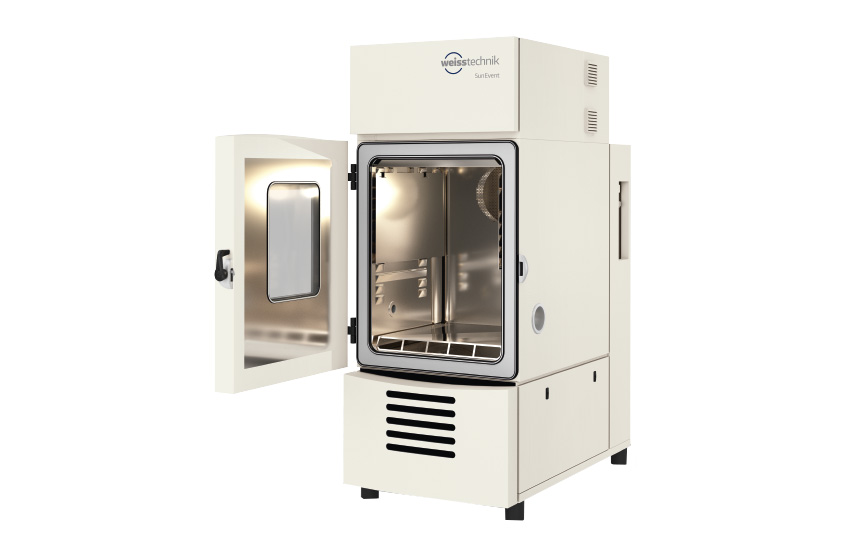In manufacturing, product quality is paramount. The consequences of a defect can be wide-ranging, from lost sales to costly product recalls. There’s also the opportunity cost of spending time rectifying the situation. Integrating environmental testing into your product development and manufacturing processes is a great way to avoid the financial and reputational hit of premature failure.
At Weiss Technik, we help support our customers in their testing efforts to ensure items brought to market are both safe and reliable. Here’s an in-depth look at the benefits of environmental testing and how to choose the best chamber for your application.
Environmental Testing Explained
Environmental chambers are used during design or production to simulate the diverse climatic conditions and mechanical stresses that items may be exposed to throughout their lifetime. Subjecting products, materials, parts, assemblies to environmental conditions can help identify design weaknesses and set expectations.
Benefits Of Utilizing Environmental Chambers
Using environmental chambers can help companies understand how products will perform in the real world before bringing them to market. This provides a variety of benefits.
- Catches Defects Early
- Improves Product Reliability
- Confirms Product Safety
- Reduces Risks To Users
- Determines Product Longevity
- Lowers Company Liability
- Set Warranty Periods
Additionally, it’s used to demonstrate compliance with industry standards and government regulations. Proving that parts or assemblies can withstand operating conditions goes a long way to building trust with customers.
How Does Environmental Testing Work?
Environmental testing is performed with a variety of different types of test chambers. Specific designs vary by application, but they’re typically an enclosed space fitted with equipment needed to create unique conditions. As a result, users can run controlled tests.
Sizes of these environmental test chambers vary from small chambers to spaces large enough for full vehicle testing. Common styles include:
Typical Conditions Tested And Their Effects
Generally speaking, environmental tests demonstrate products have the build quality to work perfectly, regardless of the operating conditions. Test chambers are used for different types of tests simulate a variety of test conditions for several different types of testing needs, which can include:
- Highly Accelerated Life Testing, or HALT Testing
- Highly Accelerated Stress Testing, or HASS
- Life Testing
- Production Monitoring
- Shock Testing
- Vacuum Testing
- Altitude Testing
- Vibration Testing
- Standards Compliance Testing
- Temperature Testing
- Humidity Testing
- Thermal Shock Testing
- Electromagnetic Radiation Testing
- Low Pressure Testing
- Weathering Testing
- Corrosion Testing
- Condensation Testing
- Salt-Spray Testing
- Ingress Protection Testing
- Dust Protection Testing
- Water Protection Testing
- Radio Frequency Shielding Testing
Test chambers can be designed to simulate one or multiple environmental conditions simultaneously, which can improve efficiency. When properly maintained, they can remain operational for twenty years or more.
How Are Test Chambers Designed?
The design and functionality of an environmental test chamber hinges upon what it will test. Some features include:
- Glass Windows
- Steel Doors
- Heating Systems
- Cooling Systems
- Humidification Systems
- Air Flow
- Vacuum Systems
- Explosion-Proofing
- Access Ports
- Shelving or racks
Choosing The Correct Test Chamber

When it comes to environmental examinations, selecting the right test chamber can be challenging. The devices under test and the types of tests you’re looking to perform are essential for finding the best test chamber. Other test chamber considerations include:
- Capabilities
- Interfaces
- Controls
- Budget
- Safety Features
- Maintenance Needs
To start, you should identify your test requirements. Do specific industry standards or governmental regulations need to be met?
Second, determine the size and density of the object under test. Is a compact benchtop, walk-in, or floor-standing best for your application? When it comes to test chamber size, don’t just consider the test chamber itself. The external dimensions need to fit in the space available at your laboratory or facility.
Next, you should weigh the power requirements. The power with which a test chamber operates indicates how quickly desired environmental conditions are reached.
Leading Custom Test Chamber Manufacturer
From product conceptualization to final validation, each manufacturer’s facilities and testing needs are unique. That’s why Weiss Technik is proud to offer environmental test chambers tailored to meet your requirements.
Our team works with you to understand your processes and testing needs. From there, a test chamber is suggested. When an existing design just doesn’t cut it, we can create a custom solution to perfectly suit your parameters.
The environmental test chambers we manufacture are utilized by companies operating in a variety of demanding industries. Examples include:
- Aerospace
- Automotive
- Batteries
- Consumer products
- Defense
- Electronics
- Heat technology
- Medical
- Military
- Pharmaceuticals
- Plastics
- Solar
- Sports sciences
- Textiles
Contact Us to learn more about environmental test chambers. Our experts are happy to discuss your needs in greater detail.


